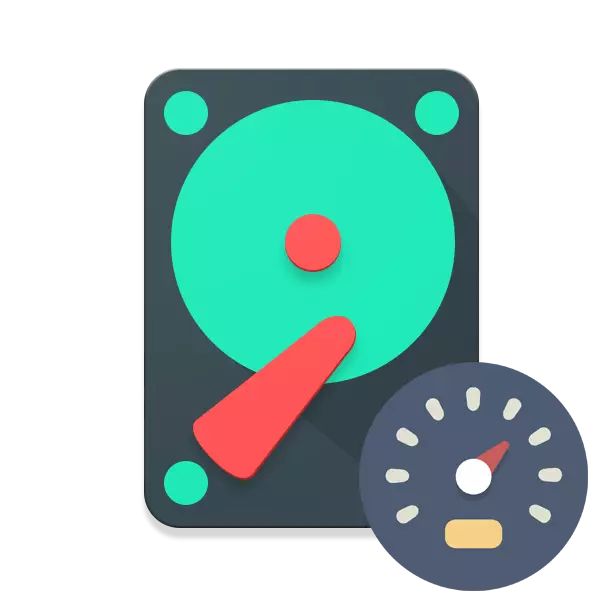
Each user draws attention to the speed of reading hard disk when purchasing, since it depends on the efficiency of its operation. A few factors affect this parameter, which we would like to talk within this article. In addition, we suggest familiarizing yourself with the norms of this indicator and tell about how to measure it yourself.
What depends the speed of reading
The operation of the magnetic drive is carried out using special mechanisms operating inside the housing. They are moving, therefore, from the speed of their rotation directly depends on reading and writing files. Now the gold standard is considered to rotate the spindle of 7,200 revolutions per minute.
Models with great value are used in server installations and it should be borne in mind that the heat dissipation and electricity consumption with such a movement is also more. When reading the HDD head should move to a specific section of the track, due to this, the delay occurs, which also affects the speed of reading information. It is measured in milliseconds and the optimal result for home use is the delay of 7-14 ms.

READ ALSO: Operating temperatures of different hard drive manufacturers
The amount of cache also affects the parameter under consideration. The fact is that when you first appeal to the data, they are placed in a temporary storage - buffer. The more the amount of this storage, the more information there can fit, respectively, its subsequent reading will be made several times faster. In popular models of drives installed in computers of ordinary users, a buffer of 8-128 MB is installed, which is enough for daily use.
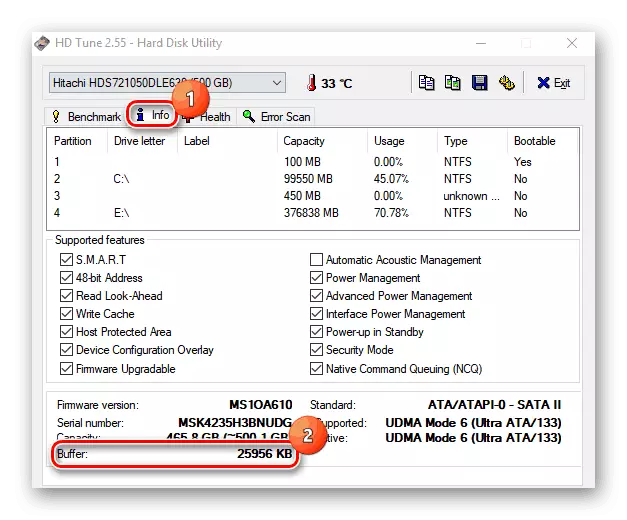
Read also: What is the cache memory on the hard disk
Supported by hard disk algorithms also have a considerable effect on the speed of the device. You can take for an example at least NCQ (Native Command Queuing) - hardware setting of command sequence. This technology allows you to take several requests to simultaneously and rebuild them as an effective way. Because of this, reading will be made several times faster. A more obsolete is the TCQ technology, which has some restriction on the number of simultaneously sent commands. SATA NCQ is the newest standard that allows you to work at a time with 32 commands.
The read speed depends on the volume of the disk, which is directly connected with the location of the tracks on the drive. The more information, the slower there is moving to the required sector, and the files are more likely to be recorded in different clusters, which will also affect reading.
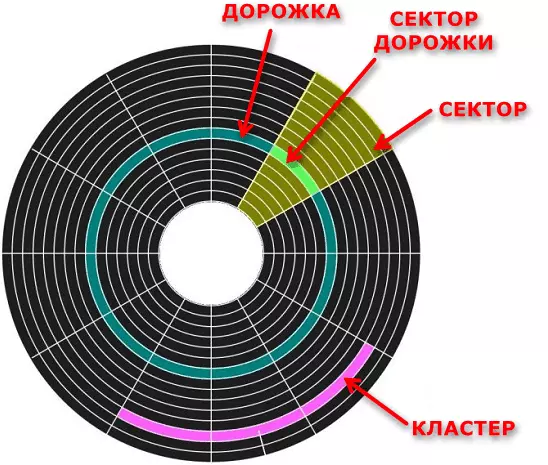
Each file system works in its reading and record algorithm, and this leads to the speed of identical HDD models, but on different FS, will be different. Take to compare NTFS and FAT32 - the most used file systems on the Windows operating system. NTFS is more subjected to fragmentation of specifically system areas, so the disk heads make more movements than the FAT32 installed.
Now we are increasingly working with the BUS Mastering mode, which allows you to exchange data without processor. The NTFS system uses another late caching, recording most of the data into the buffer later FAT32, and because of this, the read speed suffers. Because of this, you can make that FAT file systems are generally faster than NTFS. We will not compare all the FS available today, we just showed the example that the difference in performance is present.
READ ALSO: Logic Hard Disk Structure
Finally, I would like to mark the SATA connection interface versions. The SATA of the first generation has a bandwidth of 1.5 GB / C, and SATA 2 - 3 GB / C, which, when using modern drives on old motherboards, can also affect the speed and cause certain restrictions.
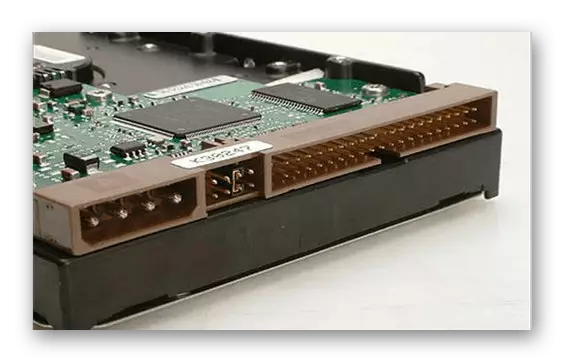
READ ALSO: Methods for connecting the second hard disk to a computer
Norms of reading speed
Now that we have dealt with the parameters affecting the reading speed, it is necessary to find out the optimal indicators. We will not take the example of specific models, with different speeds of spindle rotation and other characteristics, but only clarify what indicators should be for a comfortable work at the computer.Include, you should also take into account the fact that the volume of all files is different, therefore the speed will be different. Consider the two most popular options. Files, more than 500 MBs should be read at a speed of 150 MB / C, then it is considered more than acceptable. Systemic files usually do not occupy more than 8 kb of space on the disk space, so an acceptable reading rate for them will be 1 MB / s.
Hard disk read speed check
Above you have already learned about what depends the speed of reading the hard disk and what value is normal. Next, the question arises, how to measure this indicator on the existing storage. This will help two simple ways - you can use the classic Windows PowerShell application or download special software. After testing, you immediately receive the result. Detailed manuals and explanations on this topic are read in a separate material on the following link.
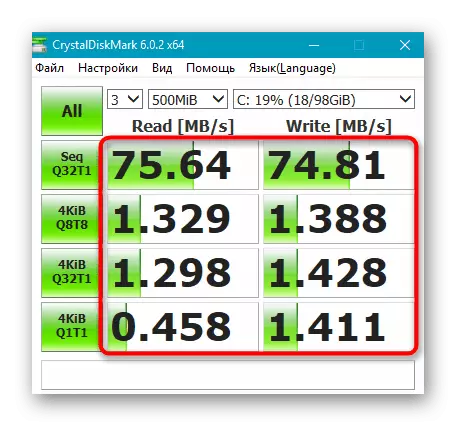
Read more: Checking the hard disk speed
Now you are familiar with the information relating to the speed of reading internal hard drives. It is worth noting that when connecting via a USB connector as an external drive, the speed may be different if you do not use port version 3.1, so consider this when you purchase a drive.
See also:
How to make an external hard disk drive
Tips for choosing an external hard disk
How to speed up the hard disk
